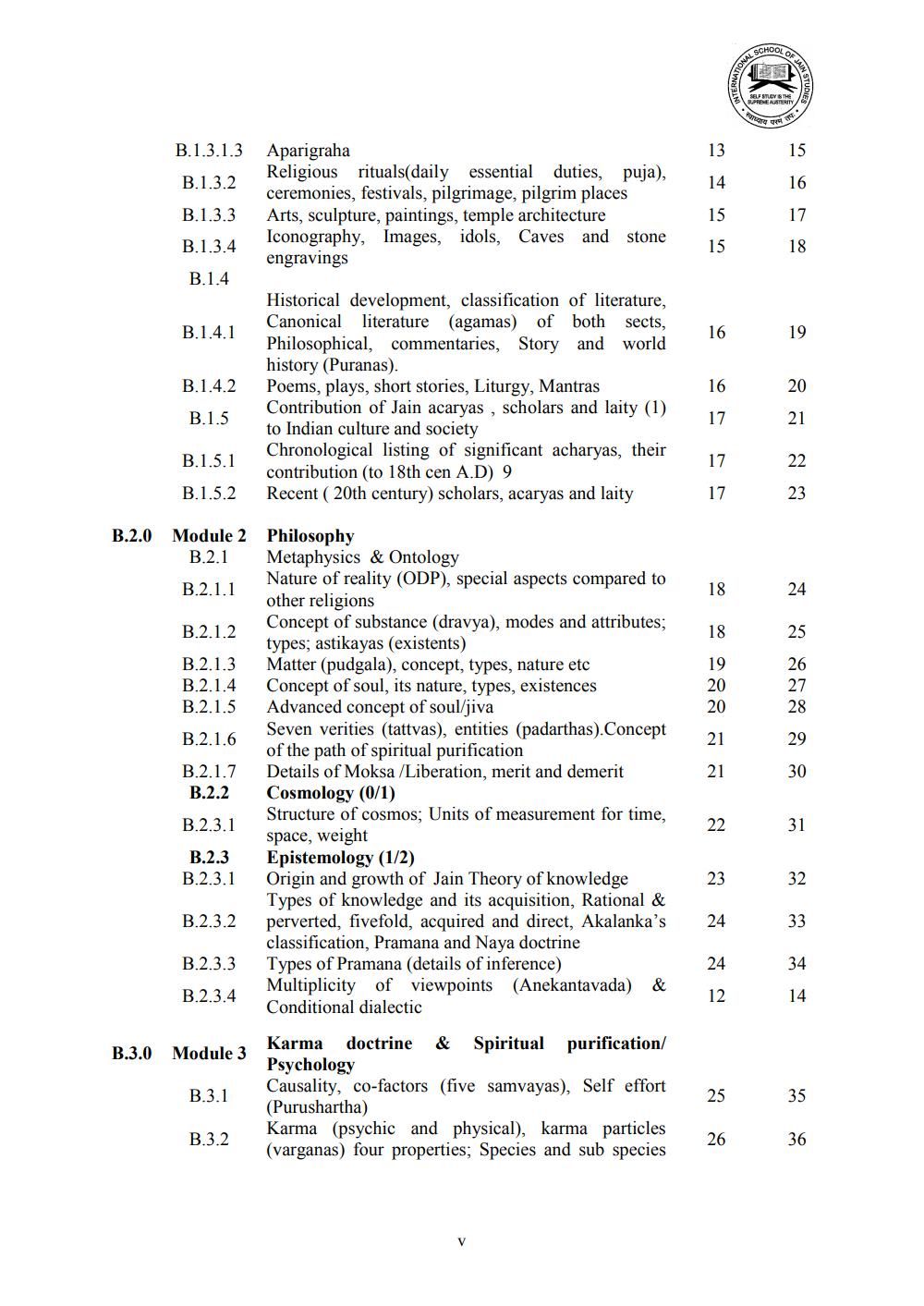________________
B.1.3.1.3
B.1.3.2
Aparigraha Religious rituals(daily essential duties, puja), ceremonies, festivals, pilgrimage, pilgrim places Arts, sculpture, paintings, temple architecture Iconography, Images, idols, Caves and stone engravings
B.1.3.3
B.1.3.4 B.1.4
B.1.4.1
B.1.4.2 B.1.5
Historical development, classification of literature, Canonical literature (agamas) of both sects, Philosophical, commentaries, Story and world history (Puranas). Poems, plays, short stories, Liturgy, Mantras Contribution of Jain acaryas , scholars and laity (1) to Indian culture and society Chronological listing of significant acharyas, their contribution (to 18th cen A.D) 9 Recent ( 20th century) scholars, acaryas and laity
B.1.5.1 B.1.5.2
17
B.2.0 Module 2
B.2.1 B.2.1.1
B.2.1.2
B.2.1.3 B.2.1.4 B.2.1.5
B.2.1.6
B.2.1.7 B.2.2
Philosophy Metaphysics & Ontology Nature of reality (ODP), special aspects compared to other religions Concept of substance (dravya), modes and attributes; types; astikayas (existents) Matter (pudgala), concept, types, nature etc Concept of soul, its nature, types, existences Advanced concept of soul/jiva Seven verities (tattvas), entities (padarthas).Concept of the path of spiritual purification Details of Moksa Liberation, merit and demerit Cosmology (0/1) Structure of cosmos; Units of measurement for time, space, weight Epistemology (1/2) Origin and growth of Jain Theory of knowledge Types of knowledge and its acquisition, Rational & perverted, fivefold, acquired and direct, Akalanka's classification, Pramana and Naya doctrine Types of Pramana (details of inference) Multiplicity of viewpoints (Anekantavada) & Conditional dialectic
B.2.3.1
B.2.3 B.2.3.1
B.2.3.2
B.2.3.3 B.2.3.4
B.3.0
Module 3
B.3.1
Karma doctrine & Spiritual purification/ Psychology Causality, co-factors (five samvayas), Self effort (Purushartha) Karma (psychic and physical), karma particles (varganas) four properties; Species and sub species
B.3.2
- 26
36




